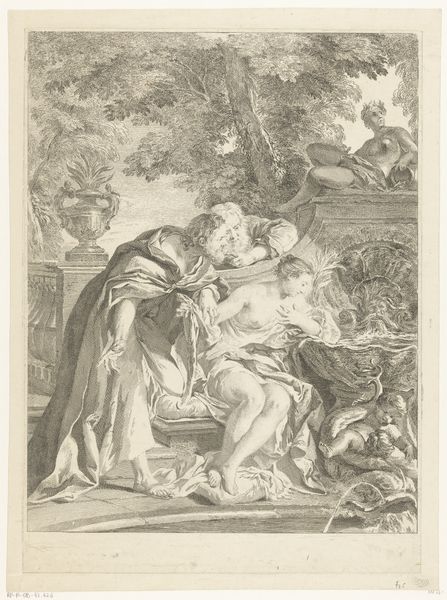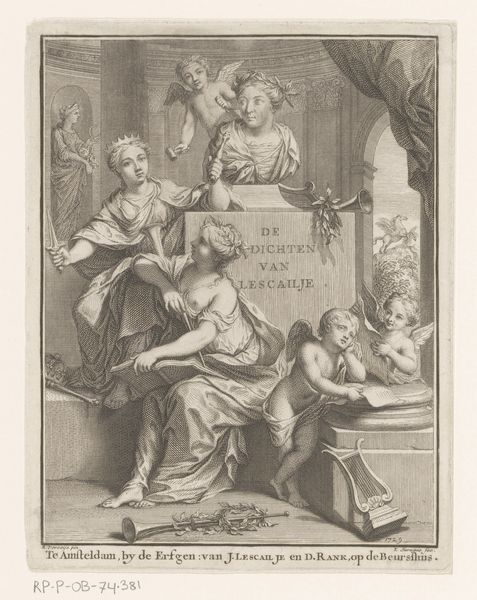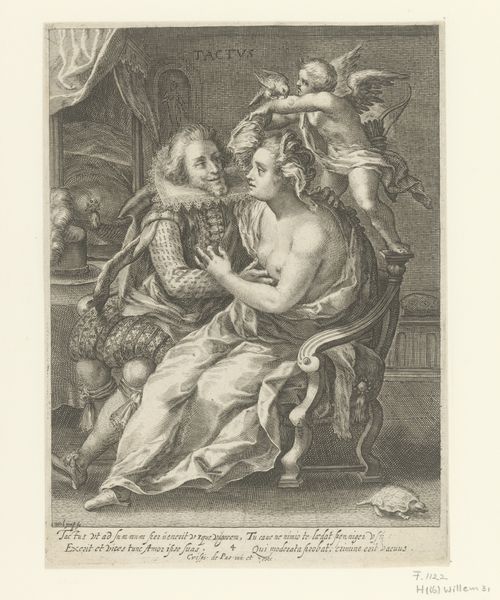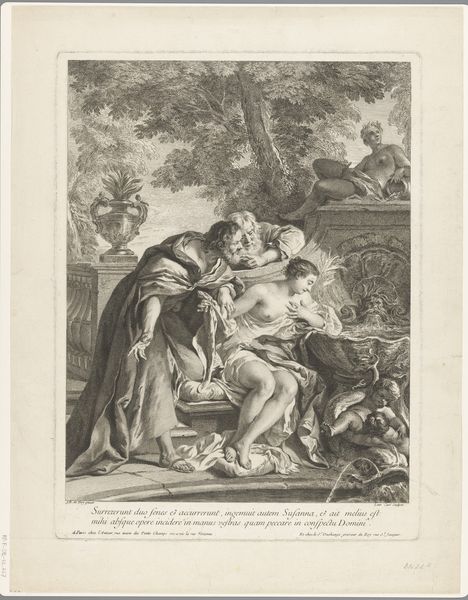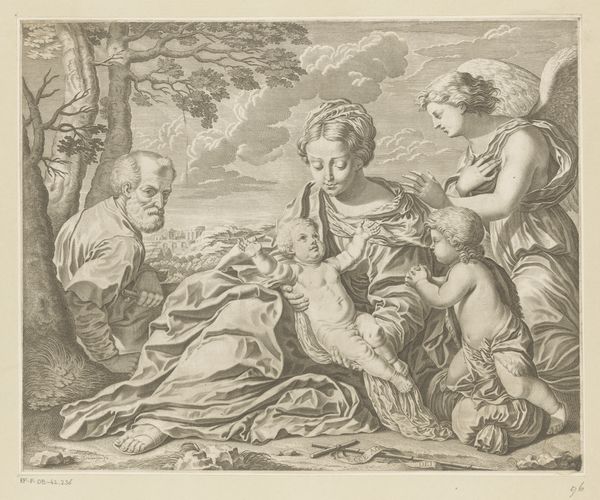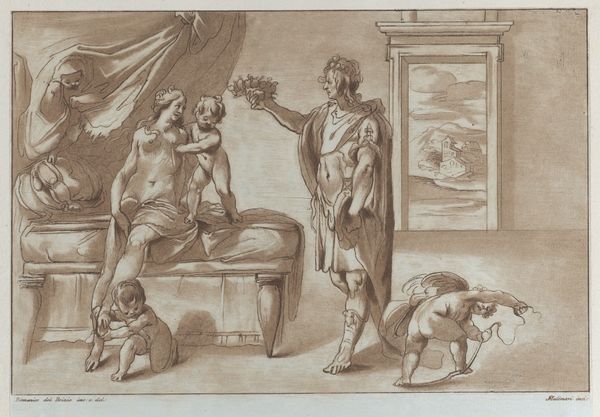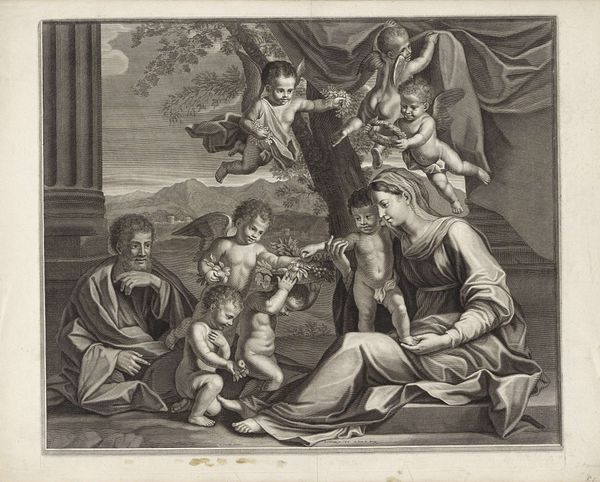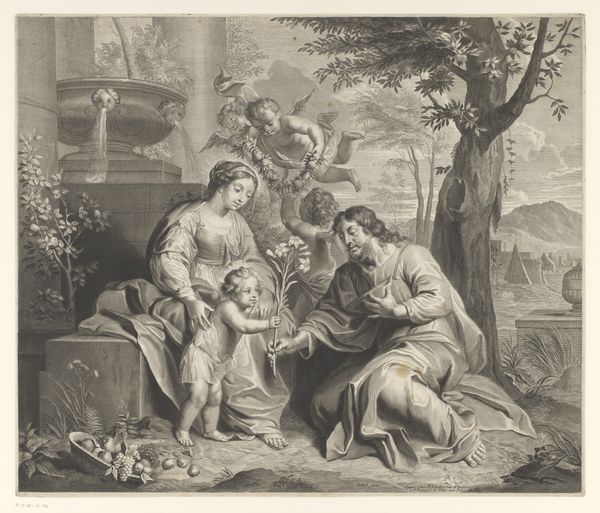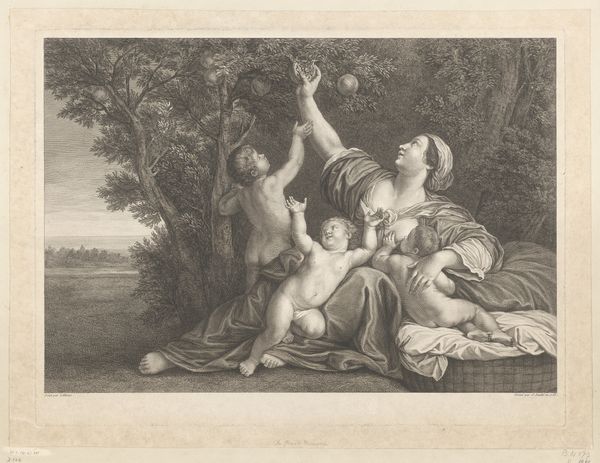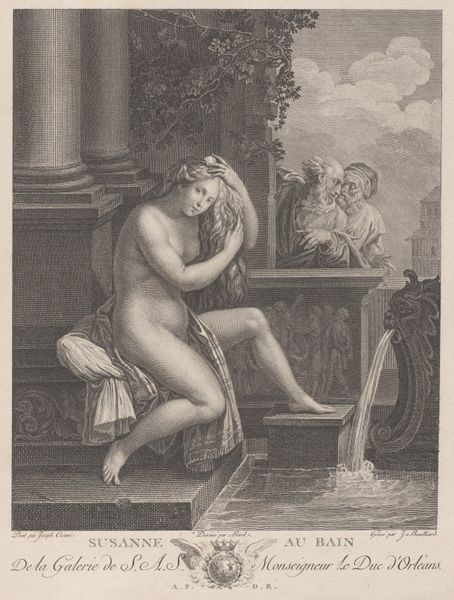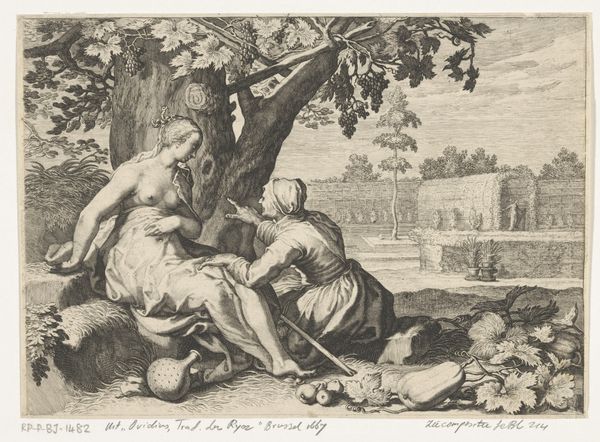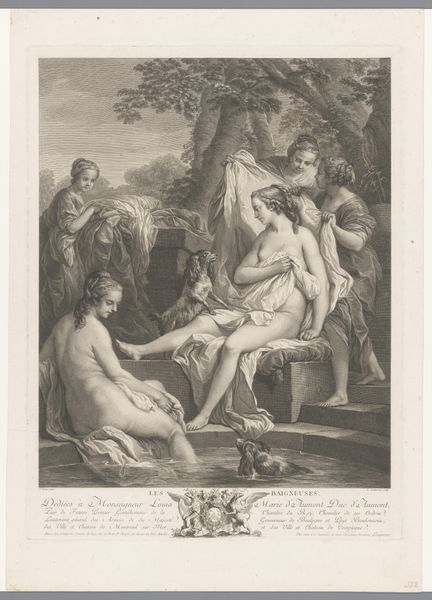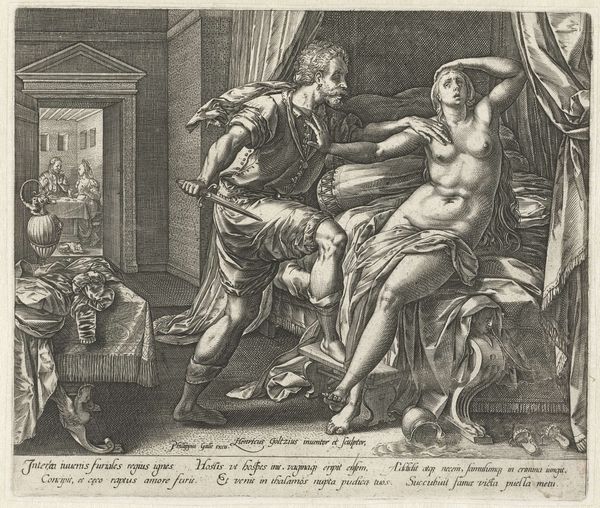
print, engraving
#
baroque
# print
#
landscape
#
figuration
#
history-painting
#
nude
#
engraving
Dimensions: height 368 mm, width 456 mm
Copyright: Rijks Museum: Open Domain
Editor: This is Louis Simonneau's "Susanna en de ouderlingen," made in 1696. It's a print – an engraving, actually. There's a disturbing tension between the figures. What symbolic readings do you see embedded in this scene? Curator: Indeed. The garden setting, complete with a fountain and classical urn, is itself a loaded space. Water is often linked to purification or life, yet here it borders a scene of potential violation. The urn is interesting. We find these classical shapes repeated over and over. Editor: Is the classical urn a recurring symbol then? Curator: Yes, precisely. Notice how the elderly men contrast starkly with Susanna. Her vulnerability and innocence become key symbolic elements in baroque art and beyond. Does that clash with the men feel intentional? Editor: Definitely! I can’t help but see their actions as predatory, emphasizing the threat against her. The quote at the bottom, translated as "It is better for me to fall into your power than to sin," is very interesting. It speaks to Susanna's dilemma. Curator: It gives voice to the complex web of moral, religious, and societal expectations. Even today the engraving offers an enduring lesson in the dynamics of power and vulnerability, seen through potent visual symbols and the tension between landscape and human form. We carry such representations forward, rethinking how we interpret the symbolic charge they bear. Editor: That definitely shifted my understanding. Thanks for the deeper insights!
Comments
No comments
Be the first to comment and join the conversation on the ultimate creative platform.

